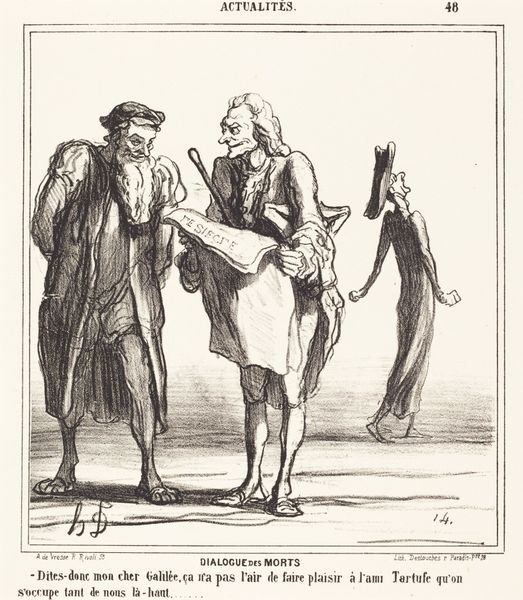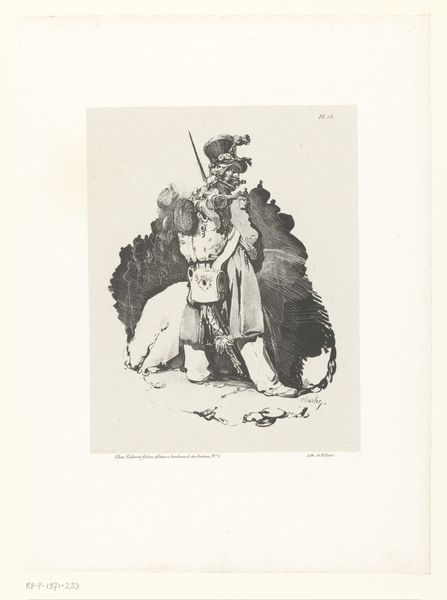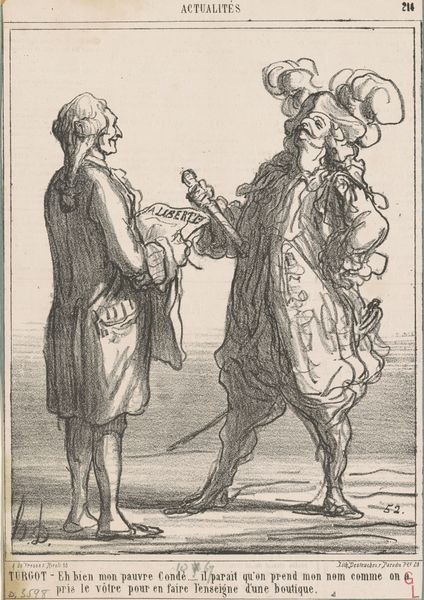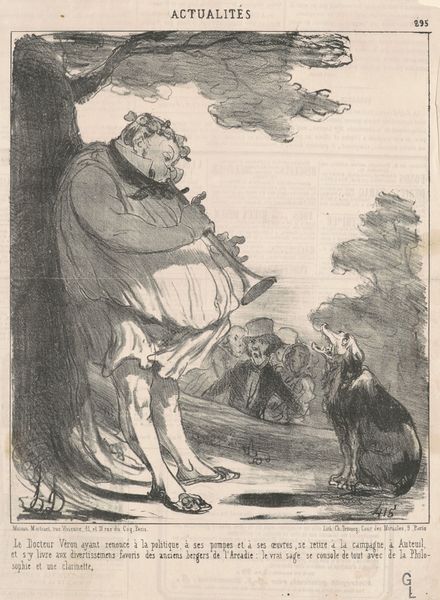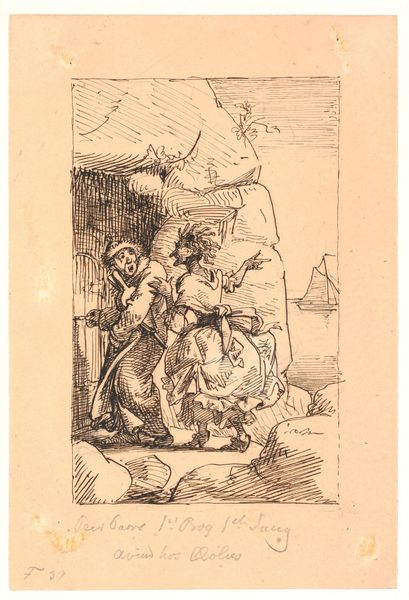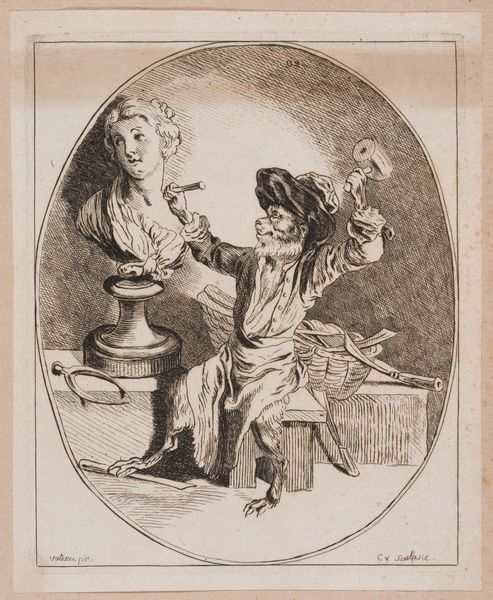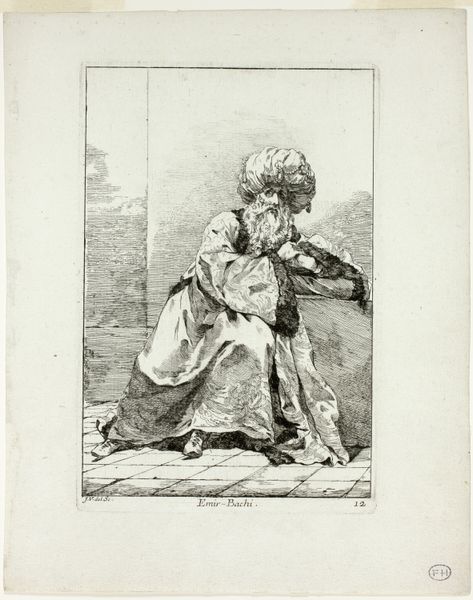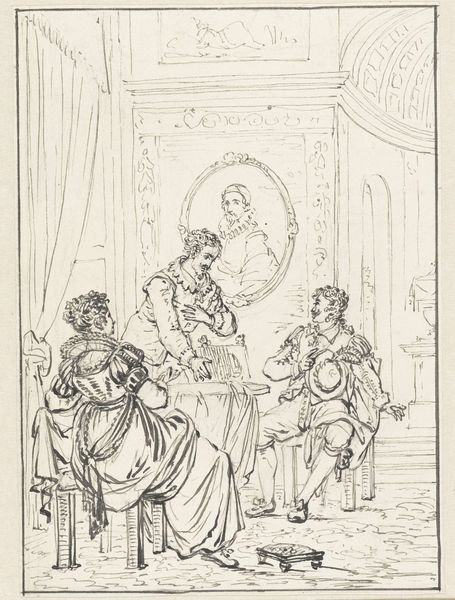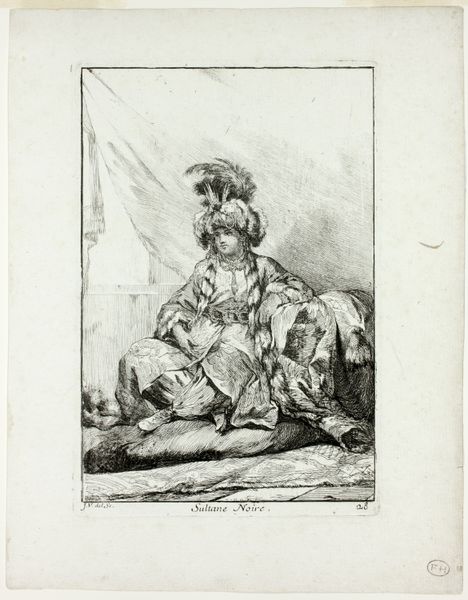
lithograph, print
#
lithograph
# print
#
impressionism
#
caricature
#
history-painting
Copyright: National Gallery of Art: CC0 1.0
Curator: Here we have Honoré Daumier’s lithograph, "Ce que l'Angleterre appelle un trait-d'union," created in 1867. Editor: Oof, a visceral piece. I'm immediately struck by the rawness of the lines, the rough texture—you can almost feel the weight of that chain, the man's strained posture, even though it's a print. It conveys discomfort and tension so powerfully. Curator: Indeed. Daumier was known for using lithography as a means of political and social commentary, particularly during a period of increasing press freedom, at least nominally. This image operates as a caricature on British foreign policy of the time, specifically relations with continental powers. Editor: Looking at the print, you see how Daumier used his art as craft, like the working-class stories or events. That lion—presumably symbolizing England—with a royal crown atop its head, weighs heavily upon the bound figure of this impoverished fellow—maybe Germany?—with the chain clearly biting into his skin. A physical constraint of materials here mirrors social constraint. Curator: Exactly! Daumier highlights the imbalanced power dynamics inherent in these international relationships. Think about England's role on the continent at the time, expanding and solidifying imperial control, and note how Daumier’s presentation challenges its supposed benevolence. It’s more domination, he seems to argue. Editor: And he does this without any refinement, purely through sharp marks on stone! There's no finesse. Just the grim reality, rendered in simple materials handled masterfully. The lithographic crayon becomes a tool of protest here; each stroke deliberately excavates how exploitation manifests physically. Curator: Absolutely. His engagement is deliberate. It is impossible to ignore how effectively he implicated print culture as both reflecting, and constructing social perceptions, not just reflecting it! It shows you that this work made him a player on that very field, deeply critical, very visible. Editor: Looking at this through the lens of materiality shifts my perspective; Daumier's choice of lithography brings attention not only to subject and theme, but the method by which opinions get formed. I think it offers an incredible reflection on these complex ideas. Curator: I agree. Daumier used visual imagery to probe socio-political circumstances, solidifying the print as a form of persuasive commentary. Editor: The more I spend looking at this work, the more convinced I am by lithography as the only true medium for expressing that rawness. It couldn't be oil paint on a canvas, that just would not work.
Comments
No comments
Be the first to comment and join the conversation on the ultimate creative platform.
